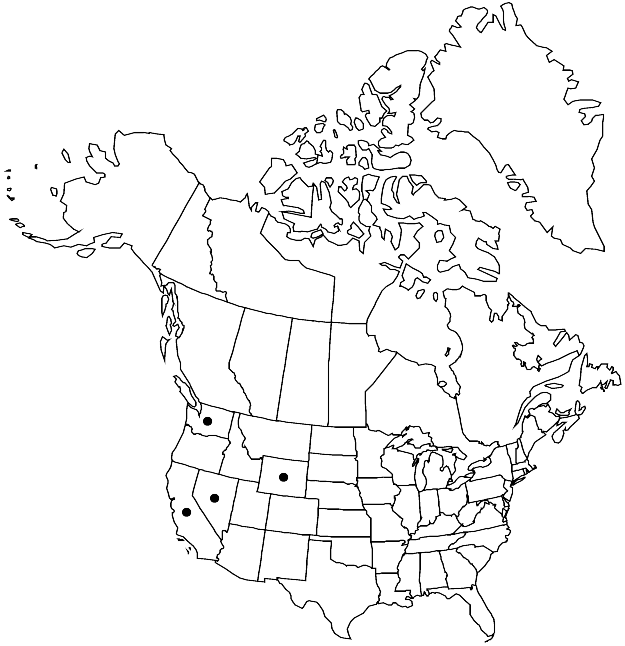Difference between revisions of "Orthotrichum praemorsum"
Bot. Centralbl. 44: 418. 1890.
FNA>Volume Importer |
FNA>Volume Importer |
||
| Line 15: | Line 15: | ||
|name=Orthotrichum affine subsp. praemorsum | |name=Orthotrichum affine subsp. praemorsum | ||
|authority=(Venturi) Kindberg | |authority=(Venturi) Kindberg | ||
| − | }}{{Treatment/ID/Synonym | + | }} {{Treatment/ID/Synonym |
|name=O. arcticum var. praemorsum | |name=O. arcticum var. praemorsum | ||
|authority=(Venturi) Wijk & Margadant | |authority=(Venturi) Wijk & Margadant | ||
| − | }}{{Treatment/ID/Synonym | + | }} {{Treatment/ID/Synonym |
|name=O. microblephare var. praemorsum | |name=O. microblephare var. praemorsum | ||
|authority=(Venturi) Grout | |authority=(Venturi) Grout | ||
| Line 36: | Line 36: | ||
|distribution=Calif.;Nev.;Wash.;Wyo. | |distribution=Calif.;Nev.;Wash.;Wyo. | ||
|discussion=<p>Of conservation concern.</p><!-- | |discussion=<p>Of conservation concern.</p><!-- | ||
| − | --><p>Orthotrichum praemorsum is rare, known only from a few collections. The species is distinguished by its strongly ribbed, emergent capsules and cuspidate, shortly hyaline-tipped leaves.</p> | + | --><p><i>Orthotrichum praemorsum</i> is rare, known only from a few collections. The species is distinguished by its strongly ribbed, emergent capsules and cuspidate, shortly hyaline-tipped leaves.</p> |
|tables= | |tables= | ||
|references= | |references= | ||
| Line 59: | Line 59: | ||
|publication year=1890 | |publication year=1890 | ||
|special status=Endemic | |special status=Endemic | ||
| − | |source xml=https://jpend@bitbucket.org/aafc-mbb/fna-data-curation.git/src/ | + | |source xml=https://jpend@bitbucket.org/aafc-mbb/fna-data-curation.git/src/8f726806613d60c220dc4493de13607dd3150896/coarse_grained_fna_xml/V28/V28_88.xml |
|genus=Orthotrichum | |genus=Orthotrichum | ||
|species=Orthotrichum praemorsum | |species=Orthotrichum praemorsum | ||
Revision as of 17:08, 18 September 2019
Plants 1–2.5 cm. Stem leaves erect-appressed when dry, ovate-lanceolate to narrowly lanceolate, 2.5–4.5 mm; margins recurved-revolute to near apex, entire; apex gradually acuminate-cuspidate; basal laminal cells elongate-rectangular, walls thick, nodose; distal cells 9–13 µm, 1-stratose, papillae 1–3 per cell, 2-fid, low. Specialized asexual reproduction absent. Sexual condition gonioautoicous. Seta 0.5–1.1 mm. Capsule 1/2 emergent when dry, barely emergent when moist, ovate-oblong when mature, oblong to oblong-cylindric when old, 1.6–2.4 mm, strongly 8-ribbed 1/2 to 2/3 capsule length, constricted below mouth when dry; stomata superficial; peristome double; prostome absent; exostome teeth 8, reflexed-recurved, finely papillose, sometimes papillose-striate proximally, perforate only at apices, not cancellate; endostome segments 8, well developed, usually absent when capsule is old and dry, narrow, of 1 row of cells, coarsely papillose. Calyptra short-conic, smooth, hairy, hairs papillose. Spores 12–18 µm.
Habitat: Rock, lava, dry montane areas
Elevation: moderate elevations
Distribution

Calif., Nev., Wash., Wyo.
Discussion
Of conservation concern.
Orthotrichum praemorsum is rare, known only from a few collections. The species is distinguished by its strongly ribbed, emergent capsules and cuspidate, shortly hyaline-tipped leaves.
Selected References
None.